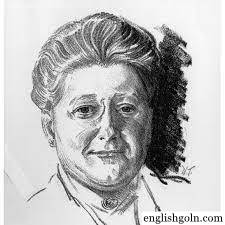“To John Keats” is a poem written by Amy Lowell, an American poet who was known for her imagist style of writing. In this poem, Lowell pays tribute to the Romantic poet John Keats, who was a major influence on her work.
The poem begins with Lowell describing Keats as a “gentle poet of the soft brown earth.” She goes on to praise his ability to capture the beauty of the natural world in his poetry, saying that he “saw the sunset’s fiery gold” and “the lilac’s purple bloom.” Lowell suggests that Keats had a deep understanding of the relationship between nature and the human spirit, and that his poetry was able to express this connection in a way that was both beautiful and profound.
Lowell also acknowledges the pain and suffering that Keats experienced in his life, particularly his struggle with tuberculosis, which ultimately led to his death at the age of 25. She laments the fact that Keats was unable to live a long and full life, saying that “time, that cruel spoiler, hurried thee away.” Despite this, Lowell suggests that Keats’ poetry has endured, and that it will continue to inspire readers for generations to come.
In the final stanza of the poem, Lowell speaks directly to Keats, saying that she feels a deep connection to him and his work. She suggests that, like Keats, she is a poet who is “haunted by the melody” of words and the beauty of the natural world. Lowell ends the poem by expressing her hope that she will one day be reunited with Keats in the afterlife, where they can continue to explore the wonders of the universe together.
“To John Keats” is a heartfelt tribute to one of the greatest poets of the Romantic era. Through her imagery and language, Lowell captures the essence of Keats’ poetry and his profound understanding of the world around him. The poem is a testament to the enduring power of Keats’ work and the lasting impact that he has had on generations of poets and readers alike.
To John Keats
Whose orbed and ripened genius lightly hung
From life’s slim, twisted tendril and there swung
In crimson-sphered completeness; guardian
Of crystal portals through whose openings fan
The spiced winds which blew when earth was young,
Scattering wreaths of stars, as Jove once flung
A golden shower from heights cerulean.
Crumbled before thy majesty we bow.
Forget thy empurpled state, thy panoply
Of greatness, and be merciful and near;
A youth who trudged the highroad we tread now
Singing the miles behind him; so may we
Faint throbbings of thy music overhear.
